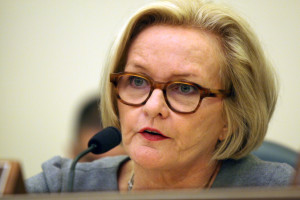
SES bonuses coming under scrutiny once again
Sen. Claire McCaskill (D-Mo.) wants information from Office of Personnel Management acting Director Beth Cobert about SES members getting multiple performance...
Bonuses paid to Senior Executive Service members are coming under the microscope once again.
Sen. Claire McCaskill (D-Mo.) wants information from Office of Personnel Management acting Director Beth Cobert about SES members getting multiple performance bonuses in the same fiscal year.
“I write seeking information about the practice of breaking performance awards for SES employees into smaller pieces over time, presumably to evade scrutiny and maximize their size,” McCaskill wrote to Cobert on June 14.

McCaskill wants data from OPM for all SES bonuses handed out between 2011 and 2015 focused on:
- The number of SES employees who received multiple performance bonuses in any single year broken down by agency and rank the executive schedule.
- The number of awards, when taken in aggregate, exceeded 20 percent of the employee’s base pay. Federal law says performance awards to SES members cannot exceed 20 percent of their base pay in any given year.
- A list of agencies where total SES bonuses exceeded 10 percent of the agency’s aggregate base pay for senior executives in the preceding fiscal year. Federal law also states the cap for all bonuses cannot exceed 10 percent of the total pay going to executives.
McCaskill wants answers from OPM by July 11.
McCaskill’s letter stems from a recent oversight of the Transportation Security Administration where it came to light that a former agency executive received $90,000 in performance bonuses over a 13-month period.
“Such as bonus, if paid in one lump sum, would have far exceeded the statutory 20 percent cap on SES bonuses, and I am concerned that this practice may be occurring at other federal agencies,” she wrote. “Federal employees should not be compensated in a manner that is deliberately intended to evade scrutiny and allow employees and agencies exceed the 20 percent cap.”
TSA Administrator Peter Neffenger recently capped cash awards to SESers at the agency to $10,000 a year.
President Barack Obama, however, issued an executive order in December increasing SES bonuses to 7.5 percent of the agency’s aggregate base pay starting in 2017. The previous limit has been set at 4.8 percent since 2011.
McCaskill has been concerned about SES bonuses for several years. In 2013, she wrote to the Government Accountability Office, asking for an investigation into whether bonuses paid to SES employees involved in contract management are effective tools in reducing costs or improving contract performance.
GAO found in a January 2015 report to Congress that 58 percent of all SESers received an average performance award of $10,614 — about 6.2 percent of their annual salary — in 2013. That is down from the previous three years when 74 to 80 percent of SESers received performance bonuses.
She also introduced legislation in May 2013 to prohibit all SES bonuses while the across-the-board sequestration budget constraints are in effect.
“SEA supported the development of the governmentwide SES performance system that OPM rolled out in 2012, and that it is imperative that agencies adhere to statutory and regulatory guidelines when issuing performance awards to senior executives, who work under a pay-for-performance system,” said Jason Briefel, interim president of the Senior Executives Association.
In addition to McCaskill’s oversight, Rep. Jason Chaffetz (R-Utah), chairman of the Oversight and Government Reform Committee, wrote two letters over the last five months asking for more details on bonuses set to federal employees.
In March, Chaffetz asked five agencies for 10 years’ worth of data on performance bonuses.
He also sent a letter to OPM in February seeking a wide swath of information on federal workers’ compensation for the past 5 years, including the number of employees in the SES who received a pay raise or bonus governmentwide, and the number and percentage of federal employees who earned more than $100,000 or $150,000 in fiscal 2015.
Copyright © 2025 Federal News Network. All rights reserved. This website is not intended for users located within the European Economic Area.
Jason Miller is executive editor of Federal News Network and directs news coverage on the people, policy and programs of the federal government.
Follow @jmillerWFED




